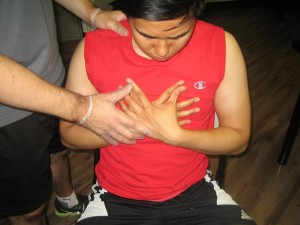Even though insect stings from a bee and wasp can cause unpleasant reactions at the site of the sting, most are usually minor and naturally subside. As for a severe local reaction, it can cause swelling with increasing pain over a period of hours and in some circumstances, the affected limb that was stung becomes swollen. Even though not serious, if swelling occurs close to the face or neck, it should be monitored carefully in case it causes breathing difficulty.
A few individuals experienced a serious allergic reaction to a bee and wasp sting that leads to anaphylaxis. In case a child has been stung and experiences chest tightness, breathing difficulty, hoarse voice or a swollen tongue, it simply indicates a severe allergic reaction that can progress to anaphylaxis. Other indications of anaphylaxis include nausea, abdominal cramping, dizziness as well as feeling of weakness and loss of consciousness. Oftentimes, the individual might develop hives and swelling over a body part distant to the sting site. Even though this is not anaphylaxis, it can indicate a mild systemic reaction. Among older children and adults, a reaction is considered as a risk factor for future severe reactions.
Close look on bee and wasps stings

It is hard to determine how many stings occur since these are most often minor and do not require medical attention. In some adults, they might experience an anaphylactic reaction to a bee or wasp sting. Among children, it is uncommon but it is still vital to watch over the child if he/she has another allergy.
Bees are not aggressive and will only sting once threatened. Nevertheless, the sting is barbed and stays in the skin after a sting. The sting can continue to pump venom into the body, thus it should be removed carefully without squeezing the venom sac. As for wasps, they are aggressive and have smooth stingers, thus they can sting more than once.
Remember that bees and wasps have different venoms, thus an allergic reaction to one does not mean that a child is also allergic to another. Just bear in mind that hornets have venom similar to wasps, thus there might be a link between the allergic reactions to the stings of these insects.
Treatment
For minor reactions, antihistamines either in cream form should be applied over the affected area or taken orally as a tablet or syrup. It works by relieving the allergic symptoms or general discomfort. You can also encourage the child to suck on an ice cube to help minimize the swelling around the mouth and throat.
When it comes to moderate symptoms, an inhaler might be recommended. In some cases, steroids or antihistamines can be given by injection. In case of anaphylaxis, a shot of adrenaline is required.
Immunotherapy or allergy shots have been recommended as a form of desensitization to the venom. In addition, avoidance is the ideal way to avoid bee and wasp stings, but this can be difficult since it is oftentimes hard to spot the insects.
